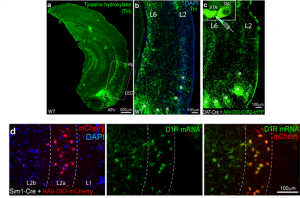New research “sniffs out” how associative memories are formed
A new research by scientists at University of California, Irvine and University of Fukui, the team led first to discover how the brain creates memories of delicious smells
September 23, 2021
UNIVERSITY OF CALIFORNIA – IRVINE
UNIVERSITY OF FUKUI JAPAN
Has the scent of freshly baked chocolate chip cookies ever taken you back to afternoons at your grandmother’s house? Has an old song ever brought back memories of a first date? The ability to remember relationships between unrelated items (an odor and a location, a song and an event) is known as associative memory.
Psychologists began studying associative memory in the 1800s, with William James describing the phenomenon in his 1890 classic The Principles of Psychology. Scientists today agree that the structures responsible for the formation of associative memory are found in the medial temporal lobe, or the famous “memory center” of the brain, but the particular cells involved, and how those cells are controlled, have remained a mystery until now.
Neuroscientists at the University of California, Irvine have discovered specific types of neurons within the memory center of the brain that are responsible for acquiring new associative memories. Additionally, they have discovered how these associative memory neurons are controlled. We rely on associative memories in our everyday lives and this research is an important step in understanding the detailed mechanism of how these types of memories are formed in the brain.
“Although associative memory is one of the most basic forms of memory in our everyday life, mechanisms underlying associative memory remain unclear” said lead researcher Kei Igarashi, faculty fellow of the Center for the Neurobiology of Learning and Memory and assistant professor of anatomy & neurobiology at the UCI School of Medicine.
The study published in Nature on September 22,British time for the first time, that specific cells in the lateral entorhinal cortex of the medial temporal lobe, called fan cells, are required for the acquisition of new associative memories and that these cells are controlled by dopamine, a brain chemical known to be involved in our experience of pleasure or reward.
In the study, researchers used electrophysiological recordings and optogenetics to record and control activity from fan cells in mice as they learn to associate specific odors with rewards. This approach led researchers to discover that fan cells compute and represent the association of the two new unrelated items (odor and reward). These fan cells are required for successful acquisition of new associative memories. Without these cells, pre-learned associations can be retrieved, but the new associations cannot be acquired. Additionally acquiring new associations also requires dopamine.
“We never expected that dopamine is involved in the memory circuit. However, when the evidence accumulated, it gradually became clear that dopamine is involved,” said Igarashi. “These experiments were like a detective story for us, and we are excited about the results.”
This discovery is an important piece in the puzzle of understanding how memories are formed in the brain and lays a foundation on which other researchers can continue to build. Associative memory abilities are known to decline in neurodegenerative diseases like Alzheimer’s Disease. Understanding the neurobiological mechanism of how these memories are formed is the first step to developing therapeutics to slow the loss of associative memory abilities in Alzheimer’s Disease.
###
The research team also included Jason Y. Lee, Heechul Jun, Shogo Soma, Tomoaki Nakazono, Kaori Shiraiwa, Ananya Dasgupta, Tatsuki Nakagawa, Jiayun L. Xie, Jasmine Chavez, Rodrigo Romo and Sandra Yungblut with UCI’s Department of Anatomy & Neurobiology; and Meiko Hagihara and Koshi Murata, division of brain structure and function, University of Fukui, Japan.
This work was supported by grants from the National Institute of Health (award numbers R01MH121736, R01AG063864, R01AG066806), a PRESTO grant from Japan Science and Technology Agency (JPMJPR1681), a Brain Research Foundation Fay-Frank Seed Grant (BRFSG-2017-04), a Whitehall Foundation Research Grant (2017-08-01), a BrightFocus Foundation Research grant (A2019380S), an Alzheimer’s Association Research Grant (AARG-17-532932) and a New Vision Research Investigator Award (CCAD201902) to Kei Igarashi. Heechul Jun was supported by the University of California, Irvine Medical Scientist Training Program (MSTP) (T32GM008620) and an NIH F31 grant (1F31AG069500).
About Assistant Professor Kei Igarashi from University of California, Irvine
Kei Igarashi, PhD is a tenure-track assistant professor of Anatomy & Neurobiolgoy at the University of California, Irvine. He leads his own lab since 2016 focusing on neuronal circuit mechanisms underlying associative memory, and investigate how damage to these circuits leads to memory impairment in Alzheimer’s disease.
About Assistant Professor Koshi Murata from University of Fukui, Japan
Dr. Koshi Murata is an Assistant Professor at Division of Brain Structure and Function, Faculty of Medical Sciences, University of Fukui. Having completed his doctoral studies from the University of Tokyo, he went on to serve as a Research Associate at the University of Tokyo, before joining the University of Fukui. His research interest covers the neural mechanisms of odor perception, appetite, and pleasure of eating.
Funding information
Dr. Koshi Murata was supported by the JSPS KAKENHI and MEXT grants.
Grant Number 18H05005

